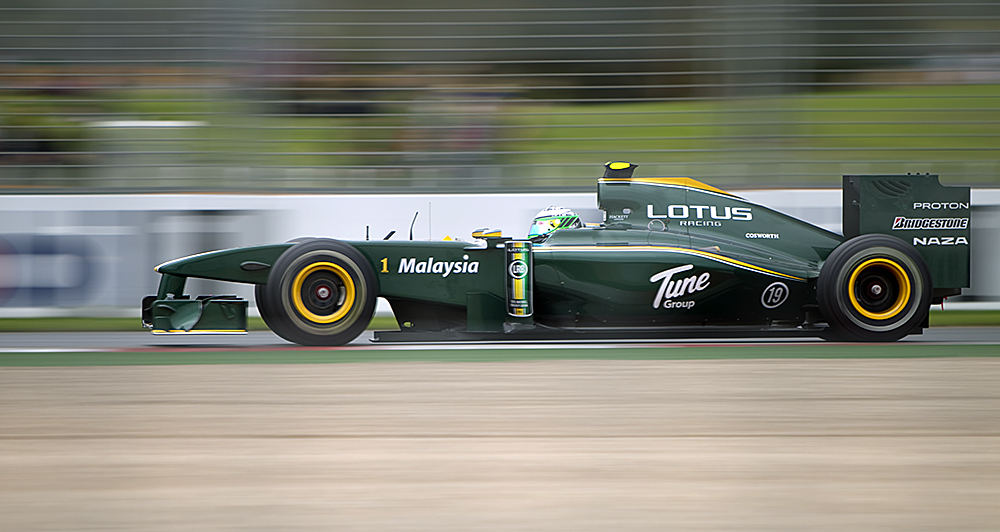Blog
Motion in Motorsport
1/09/10
The time tested way to depict motion in a moving object is to pan with a slow shutter speed. In motorsport this usually means a shutter speed of 1/30 to1/80 depending on the venue and the speed of the car. Use a telephoto lens with IS set on position 2 (to allow panning), set AF to AI servo to track the car, frame/sec at the highest rate, and make sure to follow through after hitting the shutter. With a little practice it's fairly easy to get a good rate of keepers.At some venues like the V8 Supercar street races, and the Formula 1 in Melbourne, this is complicated by the wire cage in front of you. In such cases, get up as close as you can to the wire, shoot wide open, and avoid shooting thorugh any sunny areas on the wire fence. Shooting wide open allows the narrow DOF to render the wire fence "invisible". The first 3 photos are shot at f2.8 and 1/60.



In daylight, these settings can be problematic, as at even ISO50, the picture will be grossly overexposed. As a result, some ND filters and/or a C. Polarizer may be required. Again the first 2 photos are with a 0.9ND filter and CP.
For some variety, one can attempt to try to demonstrate differential movement between the front and rear of the car. This is what the last 2 photos show.


The settings are similar to panning, i.e. 1/30-1/80, but if not shooting through wire, I use f9-f11 to allow maximum sharpness. This helps the differential. Choose an appropriate exit to a tight corner, and the rear of the car should show movement as it steps out, while the front should be sharp and in focus. Use AI servo with the centre AF point on the front of the car, pan with the car, and remember to follow through.


Comments (click to expand)